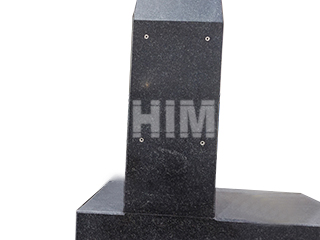T-slot surface plates—often referred to as test beds or cast iron T-slot platforms—are essential foundations for motor and engine performance testing. Their rigid structure and precisely machined T-slots allow engineers to secure test instruments, ensuring stability, repeatability, and accuracy during measurement and load evaluations. Because these platforms are used in demanding industrial environments, verifying their quality is critical to guaranteeing reliable test results and long-term durability.
The first indicator of quality is the condition of the working surface. A qualified T-slot surface plate should present a clean, defect-free face with no rust, scratches, dents, or irregularities that might affect measurement performance. Equally important is the integrity of the cast structure. A well-produced cast iron plate should be free of sand holes, porosity, cracks, inclusions, or shrinkage defects. After casting, the surface is cleaned of residual sand, edges are deburred, and the coating is applied uniformly to prevent corrosion.
High-quality T-slot platforms also reflect the precision of their material selection and production methods. Most industrial-grade plates are made from HT200–HT300 cast iron, a material known for its stability and vibration-damping properties. Before machining, the casting must undergo proper aging treatment—typically thermal stress relief—to eliminate internal stress and reduce deformation during later use. In many cases, manufacturers assign engineers to supervise this step to ensure the process is executed correctly.
Precision machining determines whether the platform meets the required tolerances for geometry, flatness, and surface roughness. Each surface, including the T-slots, must conform to the specifications on the technical drawings. For large installations where multiple plates are assembled into one test bed, overall flatness becomes a key criterion. A professionally produced system should maintain a combined flatness within approximately 0.4–2 mm, with T-slot alignment and symmetry kept within tight limits to maintain equipment stability. The base surfaces of each trapezoidal slot must lie on the same plane, with minimal deviation to ensure secure clamping during testing.
Installation features also play an important role in assessing quality. A reliable T-slot platform includes accurately positioned lifting holes or threaded points designed to minimize deformation during transport and placement. Foundation bolt holes, adjustment holes, and grouting holes must be machined to specification—typically using M24 foundation bolts with a depth of around 300 mm. Cover plates for these openings should sit flush with the platform surface with minimal tolerance, ensuring a smooth and uninterrupted working area.
Finally, finishing work distinguishes a professional product from a basic one. The working surface is usually hand-scraped to achieve precise contact accuracy, enhancing stability for critical measurements. All non-working surfaces receive anti-corrosion treatment to extend the service life of the platform in harsh industrial settings.
A well-engineered T-slot surface plate is the product of disciplined material control, strict casting standards, precise machining, and thoughtful installation design. For industries carrying out engine testing, performance evaluation, and dynamic measurement, selecting a properly verified platform ensures both safety and long-term reliability.
If you need high-precision T-slot platforms or custom engineered test beds, ZHHIMG provides fully certified solutions built for demanding industrial applications.
Post time: Nov-21-2025

